Power Pitch
Low-Field MRI
ISMRM & ISMRT Annual Meeting & Exhibition • 10-15 May 2025 • Honolulu, Hawai'i

| 08:15 |
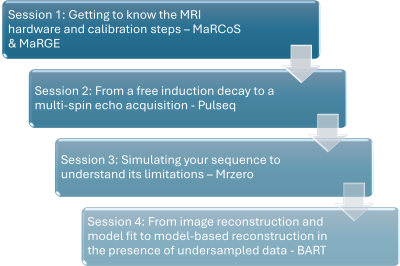 |
Screen Number: 26
0474. A
Comprehensive Educational Course with a Portable MRI Scanner -
from Hardware to Map
J. M. Algarin, J. Pfitzer, Q. Chen, T. Guallart-Naval, B.
Menkuec, M. Duarte, S. Malik, M. Zaiss, M. Uecker, J.
Alonso, M. Zaitsev, J. P. Marques
Institute for Instrumentation in Molecular Imaging (i3M), CSIC, Valencia, Spain
Impact: This event showcased the transformative
potential of in-situ scanners in MRI education, paving the
way for future educational initiatives that can enhance
practical skills and foster innovation in (low-field) MRI
applications.
|
| 08:17 |
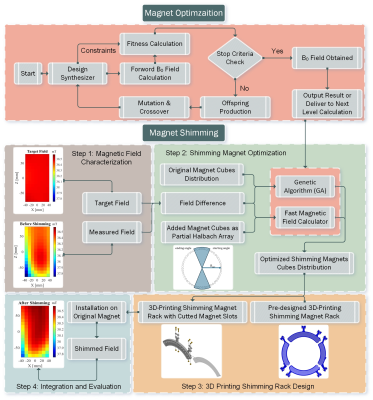 |
Screen Number: 27
0475. 3D
Printing Integrated Design and Shimming of Sparce Halbach
Permanent Magnet Array for Head-Only Portable MRI
M. Xu, W. M. Choo, T-O Liang, A. R, Y. Guo, S. Y. Huang
National University of Singapore, Singapore, Singapore
Impact: This work proposes the applications of 3D
printing to shim sparse permanent magnet arrays with
construction precision. It enables faster, cost-effective
magnet array shimming, advancing MRI capabilities in
resource-limited settings and improving global diagnostic
access.
|
| 08:19 |
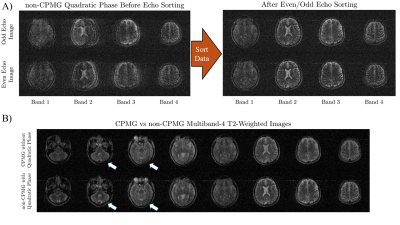 |
Screen Number: 28
0476. Non-CPMG
Multiband FSE for Improved SNR Efficiency on a Portable Low
Field System
P. Lee, Y. Qiu, J. Liu, F. Jiang, Z. Zhang
Shanghai Jiao Tong University, Shanghai, China
Impact: The application of multiband Fast Spin Echo
(FSE) refocusing pulses that do not satisfy CPMG phase
constraints was achieved using a quadratic phase increment
scheme. Employing quadratic phase increment schemes may
permit relaxation of other common FSE design constraints.
|
| 08:21 |
 |
Screen Number: 29
0477. Transient
shear wave elastometry using a portable magnetic resonance
sensor
W. Selby, P. Garland, I. Mastikhin
University of New Brunswick, Fredericton, Canada
Impact: In this study, we demonstrate that simple,
compact magnetic resonance instruments can effectively and
quantitatively characterize tissue elasticity. These methods
can be used with specific, purpose-built instruments that
can be employed in high-impact areas as valuable tools for
routine monitoring.
|
| 08:23 |
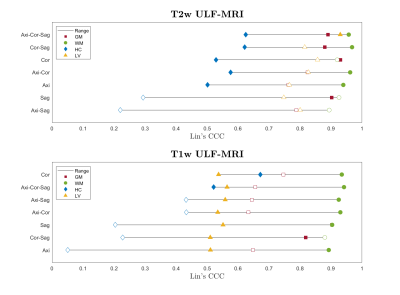 |
Screen Number: 30
0478. Ultra-Low-Field
MRI Protocol Optimization for Data-Driven and AI-Driven Brain
Volume Analysis
P. Hsu, E. Marchetto, D. Sodickson, P. Johnson, J. Veraart
Bernard and Irene Schwartz Center for Biomedical Imaging, Department of Radiology, New York University Grossman School of Medicine, New York, United States
Impact: We present an optimal ULF image acquisition
protocol with a scan time of approximately 15 minutes. Deep
learning ULF image enhancement methods that are trained on
this optimized protocol excel in the accuracy and
reliability of subsequent brain volume analyses.
|
| 08:25 |
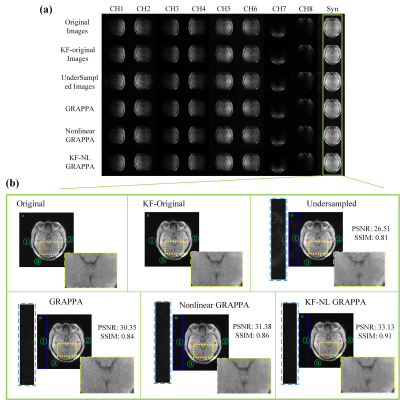 |
Screen Number: 31
0479. An
Exploration of Parallel Imaging System for Very-low Field (50mT)
MRI Scanner
L. Yang, Y. Kang, Z. Xu, H. Han
Innovation Academy for Precision Measurement Science and Technology, Chinese Academy of Sciences, Wuhan, China
Impact: We introduce, for the first time, a PI technique
specifically tailored for VLF MRI scanners. This technique
halves the scanning time, which could be especially
beneficial for stroke patients requiring VLF MRI
assessments.
|
| 08:27 |
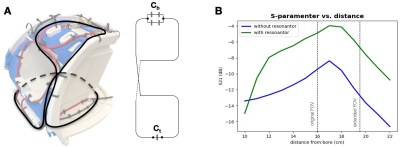 |
Screen Number: 32
0480. Design
of a local transmit RF-resonator with enhanced local B1+-field
for improved abdominal imaging in a single-sided low-field
system
K. Selvaganesan, V. Venkidu, M. Raja Viswanath, M.
Shokrekhodaei, A. Reykowski, S. King
Promaxo Inc., Oakland, United States
Impact: Low-field, open MR systems allow for
image-guided abdominal therapies but are limited by B1+-field
strength and penetration depth. The proposed local Tx
RF-resonator enhances transmit efficiency and image quality,
enabling deeper, more effective low-field abdominal imaging.
|
| 08:29 |
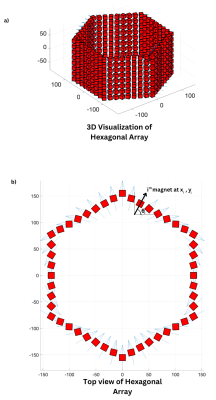 |
Screen Number: 33
0481. Polygonal
Halbach Array for Low-Field Portable MRI
A. R, B. Blümich, S. Y. HUANG
Singapore University of Technology and Design, Singapore, Singapore
Impact: This study lays the groundwork for optimizing
layered Halbach arrays with unexplored polygonal and hybrid
shapes that achieve stronger, more homogeneous fields. A
formula for versatile cross-sections enables further
innovation in magnet array designs.
|
| 08:31 |
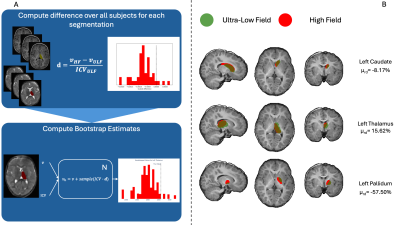 |
Screen Number: 34
0482. Propagating
Segmentation Uncertainties in Ultra-Low Field Using Matched
Scans and Bootstrapping
A. Leknes, A. Zahra, D. Scheiene, R. Macleod, C. Casella, J.
Cole, J. O'Muircheartaigh, V. Nankabirwa, M. Bruchhage
University of Stavanger, Stavanger, Norway
Impact: Robust uncertainty estimates for brain anatomy
are fundamental for investigating typical and atypical
neurodevelopment. Propagating model uncertainties to
volumetric estimates by comparing ULF results against gold
standard high-field MRI can help guide diagnosis and
assessment of brain health.
|
| 08:33 |
 |
Screen Number: 35
0483. Correcting
for b-value spatial non-uniformity arising from B0-inhomogeneity
in an ultra-low field system
J. Gholam, J. Ametepe, M. Cercignani, F. Padormo, D. Jones
CUBRIC, School of Psychology, Cardiff University, Cardiff, United Kingdom
Impact: This work demonstrates that diffusion estimates
in inhomogeneous static fields with weak encoding gradients
are likely to be significantly skewed by that inhomogeneity.
We demonstrate a simple fieldmap correction that does not
require downstream retooling and induces minimal noise
enhancement.
|
| 08:35 |
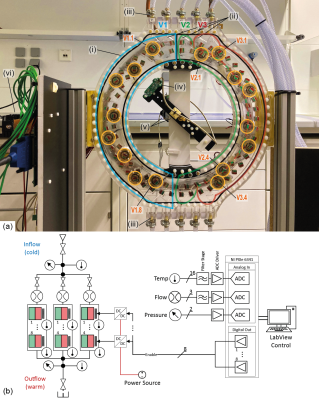 |
Screen Number: 36
0484. Enhancing
B0 Homogeneity in Low-Field MRI: Experimental Study on the
Thermal Dependence of Halbach Permanent Magnets
P. Povolni, K. Buckenmaier, S. Maltsev, K. Scheffler
Max Planck Institute for Biological Cybernetics, Tuebingen, Germany
Impact: Dynamic temperature-dependent B0-drift
of permanent magnet-based low-field MRI represents a
significant challenge, especially with bSSFP sequences. Our
experimental study, complemented by the construction of a
prototype, demonstrates a solution to this problem through
active water cooling of the magnets themselves.
|
| 08:37 |
 |
Screen Number: 37
0485. Low-cost
and Compact eGaN Gradient Power Amplifier Operation at High
Frequency: Reduced Noise Switch-mode Power Conversion
N. Bolding, C. Vaughn, A. Patel, S. Lin, J. Sun, W. Grissom,
M. Griswold
Case Western Reserve University, Cleveland, United States
Impact: This gradient amplifier for low-field MRI
employs a eGaN-transistor-based design to shrink size and
cost while suppressing noise by switching at an optimized
frequency, near to but not the Larmor frequency. These
improvements will help improve MRI accessibility and
mobility.
|
| 08:39 |
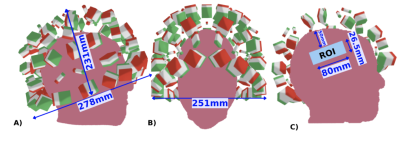 |
Screen Number: 38
0486. A
Single-Sided 50mT, 7kg “Helmet” Magnet for Continuous Brain
Monitoring in Acute-Care Setting
S. Chen, S. Altman, J. Stockmann, C. Cooley, L. Wald
Massachusetts Institute of Technology, Cambridge, United States
Impact: We present a portable, single-sided 50mT B0
magnet with improved field coverage and a built-in 50mT/m
gradient for readout, advancing the development of an MRI
system capable of continuous brain imaging in acute-care
settings.
|
| 08:41 |
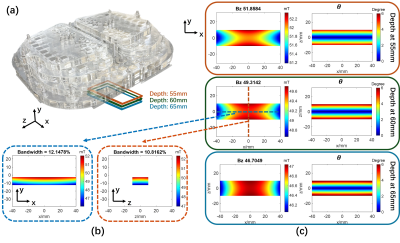 |
Screen Number: 39
0487. Lightweight
and assembly-friendly single-sided permanent magnet array design
based on Inward-outward (IO) ring units
J. YANG, R. Qin, Y. Jiang, Z. Zhou, A. R, S. Y. Huang, W. Yu
Chiba University, Chiba, Japan
Impact: A novel, open, single-sided magnet array with
65mm imaging depth was designed through a design approach
that breaks the limitations of traditional methods and
optimize magnet configurations using different types of IO
ring units.
|
| 08:43 |
 |
Screen Number: 40
0488. Abdominal
T1 and T2 mapping at 0.05 Tesla
X. Lin, Y. Ding, S. Su, A. Leong, Y. Zhao, E. Wu
The University of Hong Kong, Hong Kong SAR, China
Impact: The research aims to measure the relaxation
properties of liver, muscle, kidney, spleen and spinal bone
marrow. These measurements provide valuable information for
the design and optimization of MRI sequences to achieve
desired image contrast.
|
| 08:45 |
 |
Screen Number: 41
0489. Evaluating
repeatability of in vivo imaging in multiple locations using a
portable Halbach-based 46 mT scanner
C. Najac, R. van den Broek, T. O'Reilly, A. Webb, B. Lena
C.J. Gorter MRI Center, Radiology, Leiden University Medical Center, Leiden, Netherlands
Impact:
We examined the stability of our 46mT point-of-care MRI scanner by scanning healthy volunteers multiple times in a controlled lab settings and new locations (ICU and van). Findings showed minimal scan-to-scan variation and little differences across locations. |
| 08:47 |
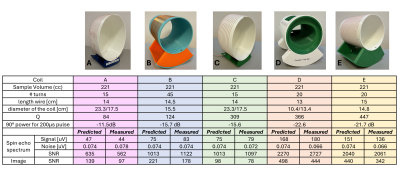 |
Screen Number: 42
0490. How
close are we to the theoretical maximum SNR in portable low
field MRI?
C. Najac, A. Webb
C.J. Gorter MRI Center, Leiden, Netherlands
Impact: A framework has been established to estimate the
signal-to-noise ratio obtainable on any given design of
point-of-care low field imaging system.
|
| 08:49 |
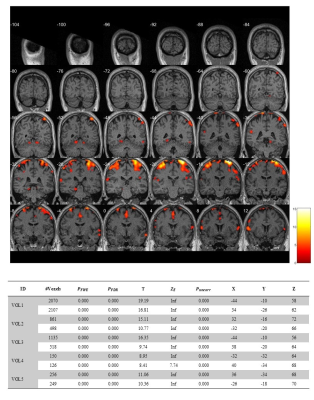 |
Screen Number: 43
0491. A
Feasibility Study of Task-Based fMRI at 0.55 T
P. Razmara, T. Medani, A. A. Joshi, M. Abbasi Sisara, Y.
Tian, S. X. Cui, J. P. Haldar, K. S. Nayak, R. M. Leahy
University of Southern California, Los Angeles, United States
Impact: This study demonstrates that reliable task-based
fMRI is feasible on 0.55T scanners, potentially broadening
functional neuroimaging access in clinical and research
settings where high-field MRI is unavailable or impractical,
supporting broader diagnostic and research applications.
|
| 08:51 |
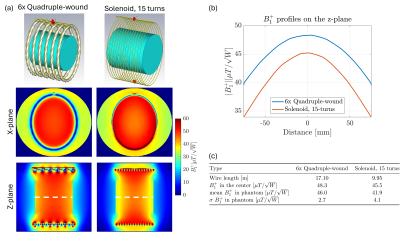 |
Screen Number: 44
0492. Toroid-inspired
RF Volume Coils for Enhanced Transmit Efficiency at Ultra-Low
Field 47mT MRI: A Comparison with Solenoid Coils
J. Vliem, I. Zivkovic
Eindhoven University of Technology, Eindhoven, Netherlands
Impact: This work suggests that toroid-inspired RF coils
may offer a more efficient and homogeneous transmit field at
ultra-low field MRI, supporting the development of
affordable, high-quality imaging systems.
|
| 08:53 |
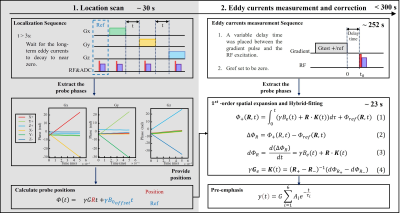 |
Screen Number: 45
0493. A
fast eddy currents correction method based on field probe in
portable low-field MRI

S. Chen, Y. Qiu, P. Lee, S. Yang, H. Chen, Z. Zhang
School of Biomedical Engineering, Shanghai Jiao Tong University, Shanghai, China
Impact: Eddy currents in a samarium cobalt two-plate
permanent magnet portable design can be reliably
characterized in 5 minutes, which can be used to minimize
impacts of field inhomogeneity, instability, and remanence,
as well as improving clinical image quality (e.g., DWI).
|
| 08:55 |
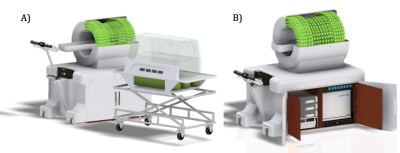 |
Screen Number: 46
0494. Progress
towards a dedicated 136 mT Portable MRI Scanner for Brain
Imaging in the Neonatal ICU
M. Sliwiak, A. Purchase, S. Altman, J. Short, M. David, V.
Klein, J. Stockmann, L. Wald, C. Cooley
Athinoula A. Martinos Center for Biomedical Imaging, Charlestown, United States
Impact: The 136 mT bedside NICU MRI scanner addresses
the high risks associated with transporting fragile neonates
to conventional MRI facilities, offering safe, on-site brain
imaging in the NICU. This could enable faster diagnosis and
earlier interventions, potentially improving clinical
outcomes.
|
| 08:57 |
 |
Screen Number: 47
0495. DC
Coil Arrays for Gradient Field Generation and Static Field
Correction at Ultra-Low Field (54 mT) MRI
M. van Dijk, J. Vliem, L. Budé, G. Radulov, I. Zivkovic
Eindhoven University of Technology, Eindhoven, Netherlands
Impact: This work demonstrates the feasibility of a
simplified DC coil structure to replace conventional
gradient coils and introduces an effective approach for
static field homogenization in ultra-low field MRI (54 mT).
|
| 08:59 |
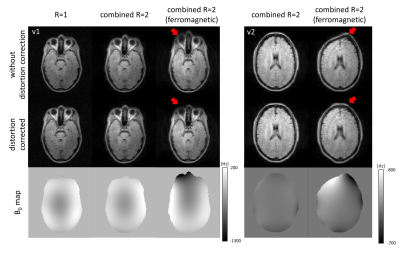 |
Screen Number: 48
0496. Accelerated
B0 Mapping and Distortion Correction in Ultra-Low Field MRI
Using Locally Low-Rank Reconstruction
Y. Dong, T. O’Reilly, C. Najac, A. Webb, B. Lena
C.J. Gorter MRI Center, Department of Radiology, LUMC, Leiden, Netherlands
Impact: This approach enables faster,
distortion-corrected imaging for low-field MRI in varied
settings, expanding its potential for accessible, portable
medical imaging in remote and resource-limited environments.
|
| 09:01 |
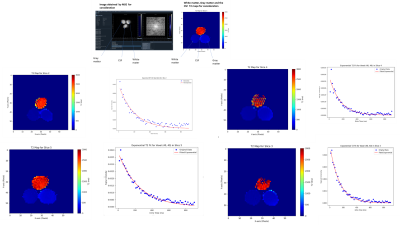 |
Screen Number: 49
0497. Standardized
Phantom for Consistent Brain Imaging Protocols for a Low-Field
MRI (48mT) System in LMICs
P. Tusiime, R. Amodoi, M. Williams, R. Asiimwe, M. A.
Nassejje, L. Lemi, O. Johnes
Mbarara University of Science and Technology, MBARARA, Uganda
Impact: The developed phantom enhances accessibility and
improves calibration consistency reducing lengthy scan
preparation times. It promotes local resource utilization &
collaborative research initiatives to advance healthcare
technology in LMICS.
|
| 09:03 |
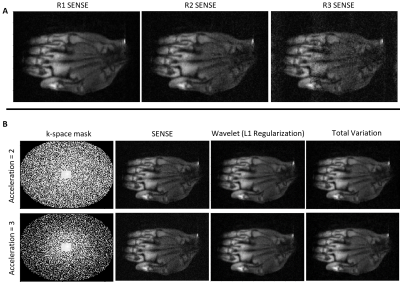 |
Screen Number: 50
0498. An
inherently decoupled three-element solenoidal array coil for
accelerated imaging on a 46 mT Halbach-based permanent magnet
system.
J. Parsa, B. Lena, Y. Dong, A. Webb
Leiden University Medical Center , Leiden, Netherlands
Impact: This method of decoupling can make the
application of solenoidal phase array possible for wrist
imaging accelerate by factor 3 which is very important in
point of care MRI systems.
|
The International Society for Magnetic Resonance in Medicine is accredited by the Accreditation Council for Continuing Medical Education to provide continuing medical education for physicians.